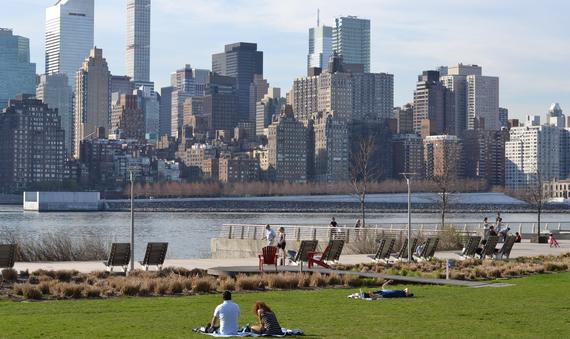This piece is co-authored by Henrik Stener Pedersen, Director, Ramboll Management Consulting
When decision makers and other delegates arrive in New York City to participate in the UN Climate Week 2016, they touchdown in a city that is struggling with the same dilemma as cities all over the world:
How do you protect your citizens from cloudbursts, sea rise and other consequences of climate change without undermining other necessary investments? How do you secure that money spent on future incidents that nobody knows when will occur, does not take too much out of today's budget to citizen's health and other indispensable items? What is the sustainable break-even here - for todays and future generations?
The answer is to do what you do in all other sound budget decisions; you inform yourself through cost-benefit analyses.
Cost-benefit is also about the benefits of life
The tricky part here is that the cost-benefit analysis is even more complicated than when you are calculating pros and cons of traditional climate adaptation, typically enlargement of the sewer system.
Take a blue-green infrastructure project, where rainwater is retained and used on the surface for water areas in parks and other places instead of overloading the sewage system. As cities like Copenhagen have discovered, cost-benefit here means not only the amount of savings in terms of avoided property damage - as the traditional grey sewage extension would. It also considers the extent to which the new green areas will improve resident's health and quality of life - plus the way this increased recreational value will influence on for example real estate prices.
Tackling several challenges at the same time
Copenhagen tries to calculate all these factors with help from Ramboll among others. When the city does climate adaptation projects, the aim is to solve more than one problem at the same time. For example not only preventing the cloudburst water from flooding houses and businesses, but reuse it so you reduce water consumption and at the same time contribute to the recreational value of the city.
Because of the added benefits, this approach is often cheaper than the traditional engineering solution, and this holistic approach has now inspired New York City.
The delegates to the Climate Week arriving in JFK Airport can catch a glimpse of the area in Queens where some of Ramboll's employees right now are conducting the first pilot project using this cost benefit-method. The area has more flooding and sewer backup complaints than any other area of the city, and certain neighborhoods are flooded repeatedly.
We have been hired because of our know-how and experience from especially Copenhagen to conduct a best practice study that determines the most cost-effective ways to reduce flooding while improving water quality; calculating both the environmental, social and economic consequences.
By combining technical and socioeconomic competences, it is possible to optimize investments in climate adaptation - so they are sustainable for the citizens of today as well as for future generations.
